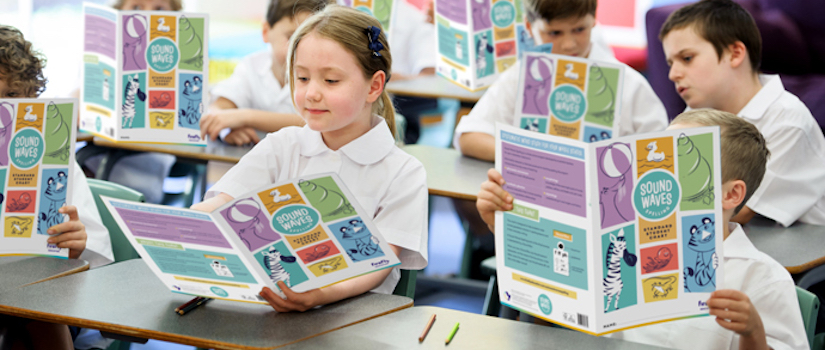Articles & Videos
Learning is child's play! Four fun phonics games no student can resist
Categories
Subscribe to our newsletters
Receive teaching resources and tips, exclusive special offers, useful product information and more!
Learning is child's play! Four fun phonics games no student can resist
Sound Waves Literacy 5/8/16

Wind back the clock a few decades and you’d be lucky to find more than a handful of teachers using games as serious (and seriously fun!) teaching tools.
How times change! Like many Aussie teachers today, our Sound Waves Literacy authors believe there are countless benefits to be had from playing educational games.
Here are five great games that will grab your students’ attention and deepen their understanding of phonics.
1. Four in a Row
Students race to place four counters in a row on a game board. The catch? They’ll need to identify missing graphemes first!
Before you begin, print out the ‘Four in a Row’ printable activity available at Sound Waves Literacy Online. You’ll also need sets of coloured counters.
Students sit around the board in groups of three or four. The word cards are placed face down in a pile. On each card is a word with a grapheme missing. The first student takes a word card and identifies the missing grapheme, then places a counter on the matching grapheme on the board.
Take turns until a student has four counters in a row – horizontally, vertically or diagonally.
2. Tell-Me-a-Word Challenge
The aim of this game is to identify words containing given graphemes. To play, you’ll need a set of Sound Waves Teaching Charts and some eager competitors.
Choose two students to compete. Point to a grapheme on the Sound Waves Teaching Chart and ask the two students to say a word that contains that grapheme. The first student to answer correctly scores a point, with the winner being the student who makes it to three points first. Then start again with two new players.
Tip: Students must make sure that the grapheme in their word makes the sound shown in the Sound Box. For example, if you point to the ow grapheme found in the ![]() Sound Box, students can say yellow or snow, but not clown.
Sound Box, students can say yellow or snow, but not clown.
3. Draw a Word
In this game, students give the ancient Egyptians a run for their money as they draw the sound icons to create words.
During this game, students can refer to their Sound Waves Student Chart.
On a small piece of paper, each student draws the icon pictures for their name. For example, Jack would draw the ![]() ,
, ![]() and
and ![]() icons.
icons.
Collect the pieces of paper, shuffle them, then give them back to the students. Each student deciphers the name on their paper and reads it out to the class.
4. Hangman
Who didn’t love playing Hangman at school? Here’s how to put a Sound Waves twist on the old favourite.
Think of a sentence that contains the focus sound for the week. For example, if your focus sound is ![]() your sentence might be: You drew two boots.
your sentence might be: You drew two boots.
On the board, draw dashes for each of the letters in the sentence. Ask students to call out a letter. If the letter is in the sentence, write it on a dash. If the letter isn’t in the sentence, write that letter elsewhere on the board and draw part of the hangman.
Students must identify all the letters before you’ve finished drawing the hangman. (You can draw something less scary – like a scarecrow!)
Once they’ve discovered all the letters, ask students to identify the common sound in all the words.
So there you have it – five great Sound Waves games that are not only fun, but also educational. Want more games? Check out our other article Five Favourite Sound Waves Games.